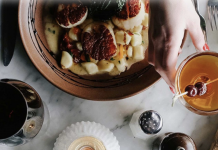
Courtesy of TPT
It’s nearly impossible to ignore the rapid changing of the environment. For many Minnesota farmers, gardeners, explorers, and general outdoor enthusiasts, living and working in nature looks different today than it did just a decade ago.
In the PBS series “America Outdoors with Baratunde Thurston,” writer, activist, and Emmy-winning host Baratunde Thurston explores how a variety of people interact with wild spaces across the country. In a recent episode highlighting northern Minnesota, Thurston chatted with a few folks about their relationship with the environment and how they’re adapting to the region’s climate-related changes. We recently caught up with the featured Minnesotans after the episode aired.

Courtesy of TPT
David and Lise Abazs have dreamed of being farmers since they were kids. The husband-wife duo spent their young adult lives exploring landscapes and farming across the world before settling down just outside Finland, Minnesota. In 1988, they started Round River Farm, a solar- and wind-powered homestead.
The Abazses have witnessed a handful of changes to the environment in the decades since the farm’s origin and have adjusted their farming endeavors accordingly, with goals of sustainability and balance in mind. “In our attempt to try and learn how to live on the land, we realized it is changing rapidly, and we have to be resilient and adapt to those changes,” Lise says.
To do so, Round River Farm has recently moved away from growing vegetables and more toward becoming a sanctuary for climate-forward tree seedlings—those of tree species that are predicted to thrive in the future. These efforts are part of the Forest Assisted Migration Project (FAMP), a collaborative attempt by the University of Minnesota Duluth, the Nature Conservancy, and other organizations to re-establish a resilient northern forest.
According to FAMP, many of Minnesota’s northern tree species are dying, which could be detrimental to the region’s wildlife, economy, and culture. The project is one way to address these challenges and lay the foundation for the trees of tomorrow. “Learning about the forest ecosystem and watching our forest struggle is quite motivating,” David says. “We are one of many, many people, and we’re just doing a little tiny slice of the pie as we explore what our role can be.”

Courtesy of TPT
Dave and Amy Freeman are another pair who call northern Minnesota home. They live in the Boundary Waters Canoe Area Wilderness (BWCAW) but spend much of their time kayaking, canoeing, and dog sledding through outdoor spaces across the world. The couple uses their experience to educate and inspire audiences on speaking tours, and they were named Adventurers of the Year by National Geographic in 2014.
Advocacy and activism play a large role in the Freemans’ relationship with the outdoors, especially in the face of current threats to the environment. In the BWCAW, a prominent threat is copper-nickel mining. In fact, the U.S. Forest Service released a draft environmental assessment in June that could lead to a 20-year ban on copper mining near the area.
The Freemans have been advocating against mining for years. In 2014, they embarked on a protest campaign in which they traveled from Minnesota to Washington, D.C., by canoe, and they even spent a year living completely outdoors in an attempt to prevent a mine from being built.
“I think we all have an obligation to advocate and protect the planet we all share,” Dave says. “I think future generations deserve clean air, clean water, and pristine wild places like the Boundary Waters. That said, we generally only love the things we know and only protect the things we love, so it’s critical that outdoor enthusiasts become advocates and introduce others to the outdoors so they will become advocates as well.”
The Freemans put this philosophy into action through the Wilderness Classroom, their organization dedicated to introducing elementary and middle school students to outdoor spaces. “We need to instill an appreciation for the natural world in the next generation and find ways to get kids outside,” Dave says.
For those who don’t want to live in the wilderness for a year or paddle across the country in a canoe, there are still ways to participate in environmental activism. “It could be as simple as picking up litter found on a favorite hiking trail, or writing a letter to your representative about the health of a nearby stream,” Amy says.







